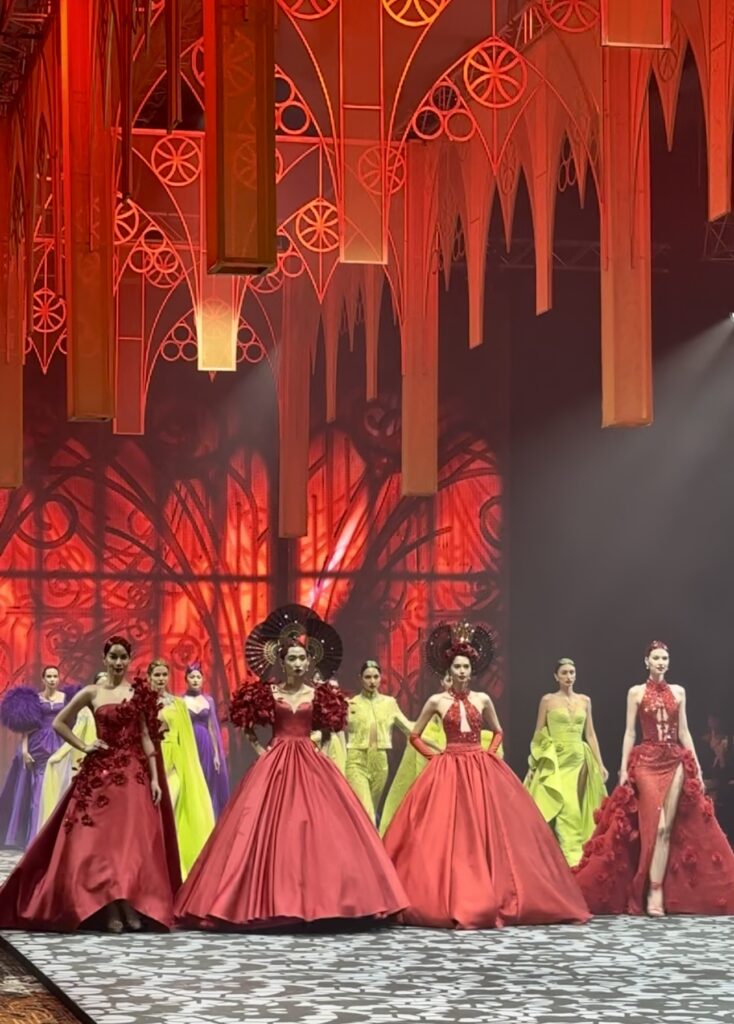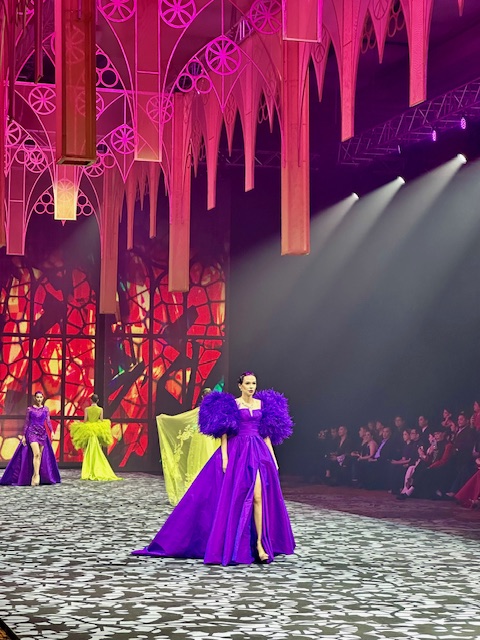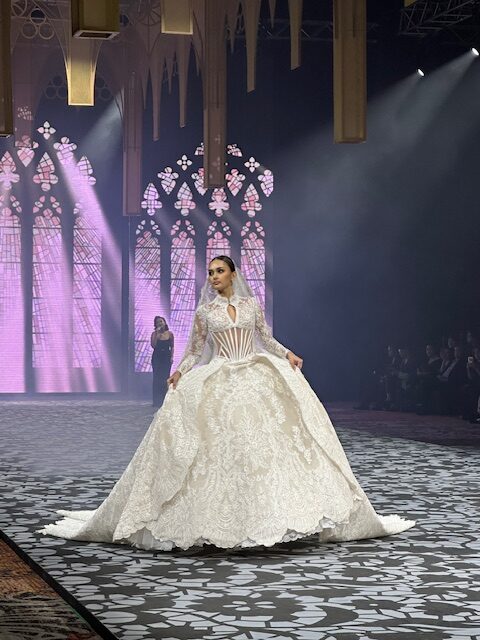Having said that, we also noticed that the famed Dubai-based Filipino designer, in his most recent show dubbed as “The Impalpable Dream of España,” at Marriott Hotel Manila’s grand ballroom, presented more tempered versions of his signature style—from the skirts’ silhouettes and volume down to, yes, his penchant for bling—as he drew iconic references from Spain.
Text and phots by Alex Y. Vergara
If you’ve seen Michael Cinco’s evolution as a designer since he first made waves in Manila more than a decade ago after making it big in the Middle East, you would know that he loves to draw heavily from his travels abroad, distilling obvious as well as subtle references from his favorite countries.
His inspirations could range from the azure skies and waters of Santorini in Greece to the visual overload of colors and textures that are par for the course in Indian weddings and festivals. Oddly enough, a maximalist designer like Michael, in one of our previous interviews, is also drawn to the simplicity and order that are evident in Scandinavian societies.
In the designer’s yet-to-be-finished book, only one country perhaps trumps all of them. And that happens to be Spain, the font of his inspiration in his latest show in Manila dubbed “The Impalpable Dream of España.”
“This is the third time I’m showing a collection inspired by Spain,” he tells PeopleAsia. “The first one was way back in 2011. More recently, I drew heavily from Alhambra. This time, it’s not just about one region, but about Spain as a whole. There’s something about Spanish culture that fascinates me.”
Directed by Robby Carmona, the show, which featured 56 looks, was divided into three suites that grouped together Michael’s major sources of inspiration: the matador or bullfighter; Spain’s devout Catholicism in the form of the black-cloaked friars; and beautiful señoritas out to beguile the gents in their updated and vibrant flamenco ensembles.
“I’ve shown half of the pieces featured in the collection before in Dubai, but the rest of the looks are new,” he says.
Complementing his clothes to give guests the total experience were such elements as dramatic lighting, canned Spanish guitar music and a series of humongous overhead and background sets reminiscent of Spain’s towering cathedrals and stained glass windows. Robby, a showman’s director in his own right, threw in a young opera singer and a chorus of male singers a la Benedictine monks who performed in between suites.
Save for the last suite, which captured the vibrant side of Spain through willowy chiffon numbers in such colors as chartreuse, purple and red, the show’s earlier segments featured dark, dramatic and mostly tailored ensembles.
For his matador suite, Michael opted for black with touches of red. To keep the clothes from looking too somber, he injected the pieces with just the right visual punch via embroidery, lace accents and sprinkles of Swarovski crystals.
The same drama, although done in a much darker fashion, was evident in his black friar suite. This time, Michael embellished his church vestment-inspired tailored pieces, including capes and jackets, with gold embroidery using a new “rubberized” technique also employed by such design houses as Armani and Dior.
As expected, the clothes’ tailoring was impeccable, the fit on the models, majority of whom are based in Manila, perfect.
For his finale, he tapped former beauty queen Ahtisa Manalo who looked divine in Michael’s wedding gown with a corset bodice and yards upon yards of Spanish lace that made up the dress’s skirt, veil, shoulders and sleeves.
“I designed the lace myself and had it manufactured in Italy,” says Michael. Apart from lace and chiffon, Michael also used a great deal of wool and liquid satin. The latter, a thick shiny fabric, would have looked over the top, even tacky in the hands of an inexperienced designer. But not with Michael.
“You can only find it Milan. You can’t find it anywhere else,” he says, referring to the liquid satin.
Michael had to deal with two major challenges as he worked on his latest collection: how not to unwittingly venture into the realm of costume; and how to reinvent his aesthetics while still being true to himself as he tries to appeal to a broader, more mainstream market beyond his core clientele in the Middle East.
By toning down both the clothes’ embellishments and bulk, he hit two birds, so to speak, with one stone.
“I deliberately opted for more subdued looks—from the ornamentation down to the silhouettes,” he shares. “This time, I want to show more wearable pieces. Hindi na ’yung huge and heavily embellished na parang pang museum (No longer the huge and heavily embellished pieces seemingly fit for a museum.)”
Still, there were certain visual flourishes in the form of capes, cloaks and oversized coats that belonged to the realm of fantasy. But without them, a good deal of Michael’s clothes can still stand on their own.
Even for someone as big and as famous as Michael, with a considerable following in the Middle East, Russia and among certain members of showbiz royalty in India, Europe and even the United States, there’s still plenty of room for growth both commercially and artistically. And the irony of it all is he believes he can achieve this by purposely turning down the volume.



















